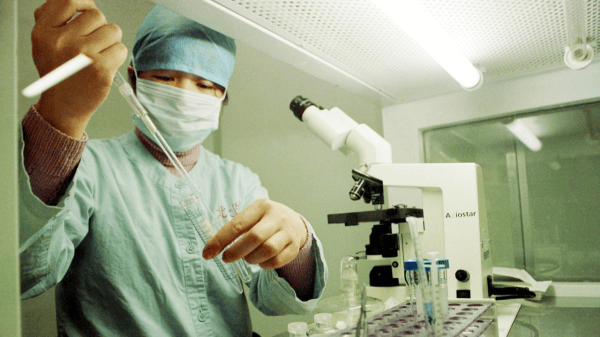Guo Xiaoqing/Wen Recently, the second trial of China’s first case of a “single woman egg freezing” was announced, with the court rejecting the appeal of the plaintiff Xu Zaozao, who requested the hospital to provide egg freezing services, and upheld the original judgment. This seemingly “expected” result brings an imperfect conclusion to nearly five years of litigation, leaving many observers of the case somewhat disappointed.
However, the discussion about women’s reproductive rights will not stop here.
Current regulations on egg freezing in China are still confined to the medical field of disease diagnosis and treatment, with the egg freezing technology only open to two very specific cases: one is female patients diagnosed with illnesses (such as tumors) whose subsequent treatments may affect their fertility; the other is couples experiencing infertility, who must meet corresponding medical indications and strict application scenarios.
The many restrictions on egg freezing technology align with the long-standing “fewer births, better births” policy implemented previously. However, many women seeking assistance with egg freezing and other reproductive technologies today are not doing so for medical reasons but rather for new demands arising in this new era—women who do not reject the idea of childbirth but wish to preserve their reproductive choices when their willingness to give birth is unclear or their conditions do not meet the requirements at present.
The expansion of rights is a dynamic process of evolution. In the past, reproductive rights have never fully belonged to women themselves. In traditional societies, women’s reproductive decisions have largely been tied to the interests of elders, spouses, or the entire family. Reproductive rights were implicitly limited to within marriage, which meant that women who could not or did not wish to marry, or who have not maintained a marriage, effectively lost their reproductive rights.
As social concepts change, rights and benefits have increasingly returned to individuals, and reproductive rights and corresponding reproductive decisions are no exception. Women’s reproductive rights are increasingly held in their own hands, no longer solely reliant on family, marriage, or husbands. With the growing prevalence of late marriage and childbearing, as well as prolonged singlehood, enhancing the security of reproductive autonomy for single women is not only a necessary extension of individual rights in modern society but also an effective way from a macro social perspective to mitigate the declining birth rate.
Against the backdrop of negative population growth pressure in China, reproductive policies have shifted from advocating for fewer births to encouraging more births, with the barriers to childbirth continuously being lowered. In July 2022, a guideline issued by 17 departments including the National Health Commission and the National Development and Reform Commission clearly stated that it would guide localities to gradually include suitable analgesia for childbirth and assisted reproductive technology projects into the medical insurance payment scope. Since 2023, many regions have included assisted reproductive technologies in medical insurance payments. Places like Sichuan have relaxed requirements for fertility registration, removing restrictions on marital status and the number of births, which is seen as a signal that non-marital childbirth is receiving equal support.
When single women can receive guarantees in a series of reproduction-related matters such as pregnancy, childbirth, and household registration, the technological restriction that prohibits single women from freezing eggs is no longer in line with the current policy environment and social reality. In response to changing demands, there have been ongoing calls in public opinion for adjustments to related laws and regulations, with multiple proposals at recent national two sessions suggesting progressing pilot projects to allow egg freezing services for single women.
Concerns about allowing single women to freeze eggs have always existed in society, with worries that this could lead to rampant illegal surrogacy. However, the latter does not necessarily relate to the former and can be strictly regulated through legal means.
On the other hand, there are medical opinions that suggest there are health risks associated with the use of egg freezing technology, and from current practices in various countries, the survival rate of thawed eggs is not high; egg freezing is not a perfect remedy for regrets. However, this should be an issue to be considered at the individual level, rather than a reason for a blanket policy prohibition. Every woman with delayed childbirth intentions should have the right to make choices at her own risk, based on informed consent.
The court ruling received by Xu Zaozao left a caveat: “With further adjustments to China’s reproductive policies, related medical and health laws, regulations, rules, clinical guidelines, and medical ethics norms may also undergo corresponding changes. Once conditions are met, Xu Zaozao can resolve relevant disputes with the pertinent medical institutions separately.” This cautious statement indirectly suggests that as


